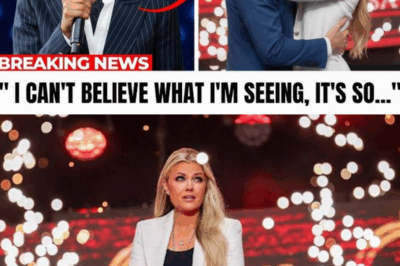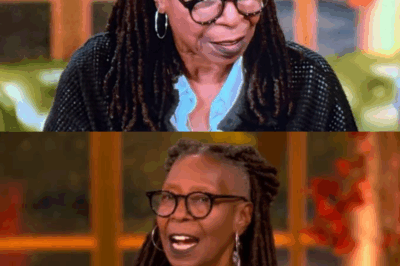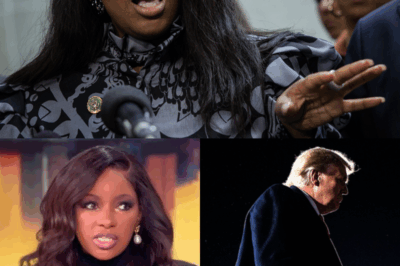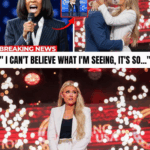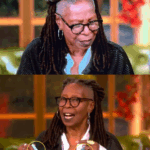The Super Bowl halftime show has always been more than just a musical interlude; it’s a spectacle that sits at the intersection of sports, entertainment, and culture.
But in 2026, the anticipation for Bad Bunny’s performance was shattered by a thunderous eruption from Pam Bondi, former Florida Attorney General, whose live television tirade transformed the event into a national controversy overnight.
Her words—sharp, deliberate, and charged with warning—have left the NFL, its sponsors, and millions of fans grappling with questions about influence, tradition, and the role of entertainment in shaping the American psyche.

Bondi’s appearance on primetime television was anything but ordinary.
What began as a routine segment quickly escalated into a cultural flashpoint.
With the studio hushed and cameras rolling, Bondi delivered her now-infamous accusation: “He’s not an entertainer, he’s a weapon.”
The phrase detonated across social media, dividing audiences and igniting a debate that would consume the nation for weeks.
At the heart of Bondi’s argument was a suspicion that the NFL’s selection of Bad Bunny was not a neutral choice, but a calculated move to use the halftime stage as a platform for “woke propaganda.”
She warned that the performance would be more than music and dance—it would be a “cleverly disguised statement,” designed to provoke, indoctrinate, and erode traditional values.
Her rhetoric painted the league as an accomplice in a broader cultural transformation, one that risked alienating its core audience in pursuit of global relevance.
Bondi’s delivery was theatrical, but her message was clear: the halftime show had become a battleground where America’s deepest divisions were playing out under the guise of entertainment.
She accused the NFL of complicity in a “coordinated takeover” of culture, suggesting that sponsors and broadcasters who supported the event were aligning themselves with forces intent on reshaping the nation’s identity.
Her closing threat—“We will know your names, and your reputations will follow you forever”—sent a chill through the industry, raising the stakes for everyone involved.
The impact was immediate and profound.
Clips of Bondi’s segment flooded social media, spawning hashtags, memes, and viral debates.
Conservative commentators hailed her courage, praising her for “saying what no one else would.”
Critics, meanwhile, accused her of stoking panic and weaponizing outrage, framing Bad Bunny as a scapegoat in a larger war against artistic freedom and diversity.
As the controversy grew, it became clear that Bondi’s outburst had tapped into a vein of anxiety running through American culture.
The Super Bowl halftime show, once a celebration of music and sport, was now a stage for a much larger drama—a struggle over who gets to define the nation’s values, whose voices are amplified, and what messages are allowed to reach millions of viewers.
The debate quickly spilled beyond the confines of sports media.
News outlets dissected Bondi’s remarks, questioning the legality of her threats against sponsors and speculating about possible repercussions.
Investigative journalists began scrutinizing NFL partnerships, probing for evidence of hidden agendas and political influence.
Social media platforms became battlegrounds, with influencers on both sides crafting dueling narratives—some portraying Bad Bunny as a victim of censorship, others as a provocateur whose presence was a deliberate affront to tradition.
Internationally, the reaction was just as fierce.
Spanish-language media rushed to defend Bad Bunny, framing the uproar as an attack on Latino representation at one of the world’s most-watched events.
In Puerto Rico, where Bad Bunny is a cultural icon, Bondi’s remarks were met with outrage, fueling accusations of xenophobia and cultural exclusion.
The controversy became a global story, highlighting the challenges of balancing tradition and diversity on a stage as prominent as the Super Bowl.
For the NFL, the stakes could hardly be higher.
The league’s audience is a complex tapestry—older fans who cherish tradition, younger viewers drawn to innovation and diversity.
By selecting artists like Bad Bunny, the NFL hopes to expand its reach and reflect the changing face of America.
But Bondi’s eruption exposed the risks inherent in that strategy, revealing a deep-seated tension between the desire for progress and the fear of losing something essential.
The history of Super Bowl halftime controversies is long and storied.
Janet Jackson’s 2004 “wardrobe malfunction” sparked a national debate over decency.
Beyoncé’s 2016 performance, with its political undertones, drew both applause and anger.
Jennifer Lopez and Shakira’s 2020 show was hailed by some as groundbreaking, condemned by others as inappropriate.
Each incident has tested the boundaries of what the halftime show can—and should—represent.
Bondi’s attack on Bad Bunny is the latest chapter in that saga, but it feels different in its intensity and scope.
Her words have reframed the halftime show not as an entertainment event, but as a mirror reflecting America’s fractured identity.
The debate is no longer about choreography or setlists; it’s about reputations, power, and the survival of cultural values in an era of rapid change.
As the NFL remains silent, the fallout continues to spread.
Sponsors and broadcasters are weighing their options, mindful of the reputational risks Bondi has threatened.
Fans are divided, some calling for the cancellation of Bad Bunny’s performance, others rallying in support of artistic freedom.
The league’s leadership faces a dilemma: how to navigate a controversy that has become a referendum on the future of American culture.
Bondi’s eruption has ensured that the 2026 Super Bowl halftime show will be remembered not for its music, but for the firestorm surrounding it. Her phrase—“He’s not an entertainer, he’s a weapon”—will echo long after the lights go down, a symbol of the tensions that define this moment in American life.
Whether her warnings prove prophetic or exaggerated, the impact is undeniable: the halftime show is now a stage where the nation’s deepest conflicts are played out in real time.
In the end, the controversy raises a fundamental question: can the Super Bowl halftime show ever truly escape the gravitational pull of culture wars?
Or has it become, by virtue of its visibility and influence, the ultimate battleground for the soul of America?
As the countdown to kickoff ticks closer, that question remains unanswered, hanging over the league, its fans, and the country itself.
What is certain is that Pam Bondi’s outburst has changed the game.
The halftime show will never again be just about entertainment.
It is now a test of values, a measure of influence, and a reflection of the forces shaping the future of American identity.
The stakes are high, the divisions deep, and the outcome uncertain.
But one thing is clear: the Super Bowl stage, once a symbol of unity and celebration, is now a lightning rod for the nation’s fiercest debates.
As the NFL prepares for the next chapter, it must confront the reality that every choice—from the selection of performers to the framing of the show—will be scrutinized, debated, and contested.
The league can no longer afford to ignore the cultural currents swirling around its biggest event.
It must find a way to balance tradition and transformation, respect and rebellion, unity and diversity.
Pam Bondi’s words have guaranteed that the debate will continue, long after the final whistle.
The Super Bowl halftime show is now more than a performance; it is a reflection of America itself—fractured, passionate, and forever in search of common ground.
News
💔 “SHE DIDN’T PLAN TO BE A HERO — SHE JUST COULDN’T WALK AWAY.” 🌧️ When Rachel Maddow landed in Jamaica to cover the aftermath of Hurricane Melissa, she expected devastation. What she didn’t expect… was her. A little girl, barefoot in the wreckage, clutching a soaked teddy bear and whispering one word: “Mama.” Reporters looked away. Cameras kept rolling. But Maddow — silent, trembling — stepped forward. That night, she stayed. Days later, she signed the papers that changed both their lives forever. Now, as the world reacts to her unexpected act of love, one haunting question remains: Was this journalism… or destiny?|KF
1. The Storm That Took Everything The storm had no mercy. Hurricane Melissa tore through Jamaica with winds that howled…
😱 “NO CAMERAS. NO PRESS. JUST ACTION.” 💥 When Hurricane Melissa left Jamaica in ruins, everyone expected statements — not silence. But that night, Rep. Jasmine Crockett made a call no one knew about. Hours later, a private shipment — blankets, medicine, and water filters worth $500,000 — quietly left U.S. soil. No press release. No credit. Just a note inside the first box that made rescuers burst into tears. Now, the world wants to know: what did she write?|KF
When Hurricane Melissa finally loosened its grip on Jamaica, what remained was not silence but the faint hum of survival…
💥 “THE TAPES WERE NEVER MEANT TO LEAVE THE BUILDING.” 😳 A Turning Point USA insider has come forward — and what they just leaked about Erika Kirk and the Chief of Staff is sending shockwaves through conservative media. Behind closed doors, secret recordings. Late-night meetings. Deleted emails that someone thought were gone forever. And now, the story is unraveling — faster than anyone can contain it. The insider’s confession doesn’t just expose one scandal… it hints at a network of cover-ups stretching far beyond TPUSA. 👀 Either way, the receipts are coming — and they could change everything. 👉 Full leaked details in the comments (CMT) before they disappear… 🔥👇👇|KF
Late last night, an anonymous insider from Turning Point USA (TPUSA) dropped a bombshell that has sent shockwaves through conservative…
“LIVE MELTDOWN ON NATIONAL TV” — WHOOPI GOLDBERG’S EXPLOSIVE MOMENT LEAVES ‘THE VIEW’ IN CHAOS 😱💥 It started like any other morning at The View. Laughter. Headlines. Controlled chaos. Then — a single note changed everything. As producers slipped Whoopi Goldberg a message mid-segment, cameras caught something no one was supposed to see. With a glare sharper than a knife, she snatched the paper, ripped it to pieces, and tossed it aside — live, unedited, and on national television. The studio froze. Her co-hosts went silent. Viewers at home could feel it — that thick, electric tension pulsing through the screen|KF
Inside Whoopi Goldberg’s Live Meltdown — and the Crisis Shaking Disney’s Daytime Empire It started with a folded piece of…
💥 “NO CAMERAS. NO PRESS. JUST THREE NAMES THE WORLD THOUGHT THEY KNEW.” 🌪️ When the Category-5 monster Hurricane Melissa tore through Jamaica, help was nowhere in sight. Then — without a single announcement — a private jet touched down at dawn. Inside: Rachel Maddow. Stephen Colbert. Joy Reid. No sponsors. No cameras. No entourage. They brought 5 tons of food, medicine, water filters, and $1.5 million in aid, all paid from their own pockets. Locals said they worked through the night — lifting boxes, feeding children, treating wounds — not a single word about fame or press. And when a volunteer asked why they came, Joy Reid quietly answered: “Because the news doesn’t need to cover this — humanity does.” By morning, they were gone. No selfies. No headlines. Just whispers spreading across the island — “Were those really them?” Nobody knows who leaked the flight manifest. But one thing’s certain: this wasn’t charity. This was rebellion — against the silence of comfort. 🕯🌎 👇 Full uncovered story before it disappears…|KF
No cameras. No sponsors. Just three journalists who decided to act, not speak. When Hurricane Melissa struck Jamaica — the…
End of content
No more pages to load



